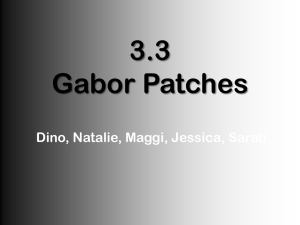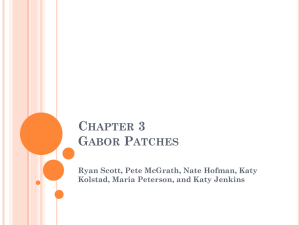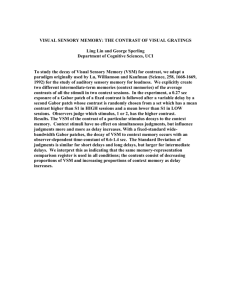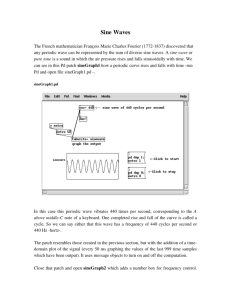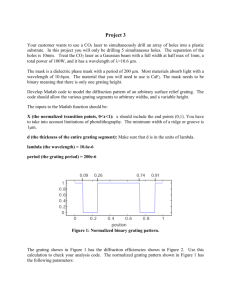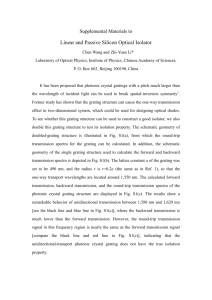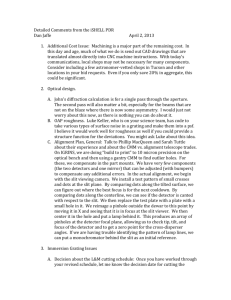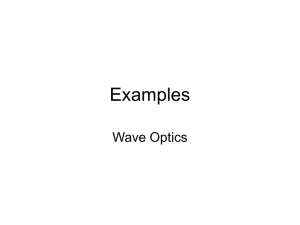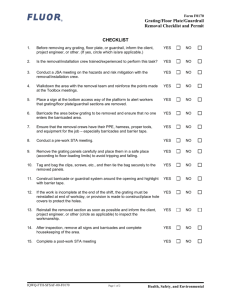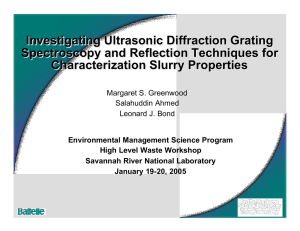Gabor Patches are presented through Gaussian windows
advertisement
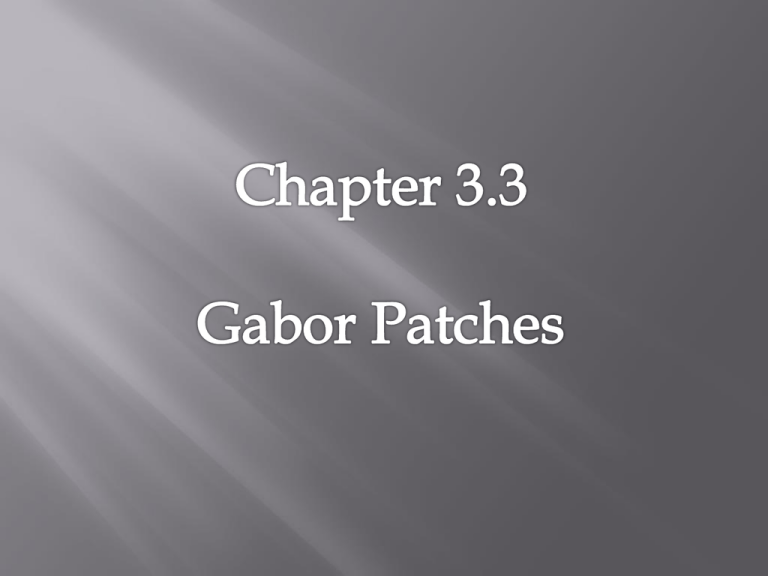
• Studies have shown that neurons in the primary visual cortex can be manipulated under an appropriate set of stimulus conditions • The result of correct conditions is the Gabor patch which is considered a common building block when working with visual stimuli • The reason they work is because “they have characteristics that match the receptive field properties of neurons in primary visual cortex” • It consists of a visual representation of a sine wave grating seen through a Gaussian window Definition: “An image in which light intensity alternates between its brightest and darkest values according to a sine function” It flows smoothly; no abrupt edges. o The grating of the Sine wave is sampled through the array of receptors at the back of the retina o Perception of Sine wave grating depend on spacing. If the receptors are spaced apart so that the whitest and blackest parts of the grating fall on separate cones, the grating can be made out. If too tightly packed, the stimulus lands on the same cone and grating can’t be made out. Aliasing – misperceiving cycles to be longer than they actually are -The sharp edge eliminator! -Gaussian window softens the edges so the change at the edges is not as abrupt so that the waves are detected instead of the hard edges formed around the waves. -Gabor Patches are presented through Gaussian windows Measured in cycle/degree Smaller cycle results in a higher spatial frequency and vice versa The contrast simply refers to the differences in intensity throughout the different portions of the patch. High contrast patches have light regions show up in white and dark regions as black. In low contrast light regions are light grey and dark regions are dark grey. -the relative position of a sine wave within the receptive field -position shifts between 0-90-180-270 degrees -response levels of ganglion cells are dependent upon the phase of the grating Ex. On-Center Ganglion Cells (w/ ideal spatial frequency) -0° yields positive response -90° yields no response -180° yields negative response -270° yields no response -other cells respond to different phases, filling the “gaps” One example of an application of the Gabor Patch is the RevitalVision patient learning program. The RevitalVision patient learning computer program aids patients in through presenting visual stimuli such as the Gabor Patch. Patients can improve their own vision through observing the differences in visual stimuli presented by the Gabor Patch In modern rehabilitation an application of this would be for people who have had a stroke in the past. Since their visual system might be affected, therapists can use this program to improve and rehabilitate patient’s vision. This is accomplished through exposure to the Gabor Patch so that the patients’ sensitivity to different frequencies of light may be improved. Source: http://www.revitalvision.com/Doctors/ScientificBackground/
